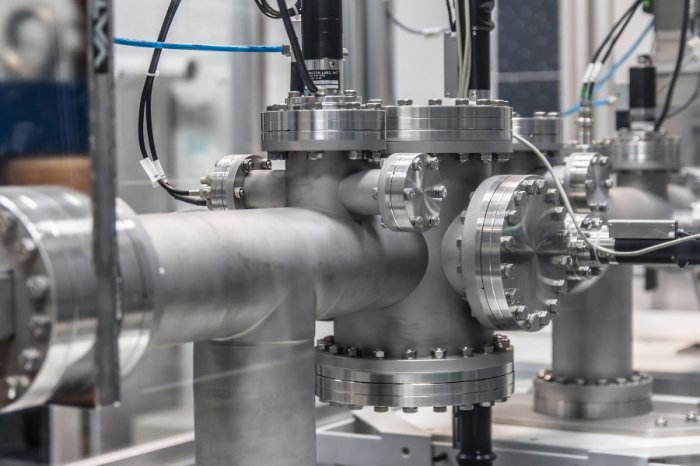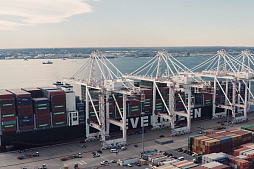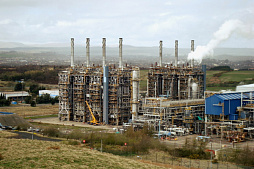After receiving the necessary documents (application form and project presentation), our team will try to review your request as soon as possible, and leading experts will offer the best options for project funding.
According to the European Council of the Chemical Industry (CEFIC), capital investment in the construction and modernization of chemical plants rose by almost a third between 2005 and 2015, exceeding $ 200 trillion on the eve of the pandemic.
According to experts, the demand for the products of chemical enterprises in the coming decades will grow by 4-5% per year.
The global chemicals industry continues to grow amid favorable long-term forecasts.
Petrochemical sector continues to play an important role in the structure of the chemical industry.
International Energy Agency forecasts show that by 2040 this sector will supplant the fuel and energy sector as the largest consumer of crude oil.
The daily oil demand of chemical enterprises will exceed 15 million barrels, which is associated with significant investments in the oil refining sector.
Skillfully using many years of experience and professional competence, the financial team of ESFC Investment Group is ready to offer long-term financing for the construction of chemical plants around the world.
Our flexible financing solutions support the development of the industry nationally and internationally by providing access to large loans and complex project finance instruments.
We have accumulated enough knowledge, experience and technology to promote the development of the chemical industry in all areas.
ESFC Investment Group offers its clients:
• Large loans for the construction and modernization of chemical plants.
• Refinancing of debts of chemical industry enterprises.
• Services in the field of financial engineering and financial modeling.
• Engineering design and construction of plants under the EPC contract.
• Legal, technical and financial consulting.
Contact us to learn more about our technological excellence and broad financial opportunities.
Investment cost of building chemical plants
The purpose of this section is to provide an overview of the main approaches to assessing the investment costs associated with the construction and start-up of a chemical plant.We cannot talk about specific figures, since the differences in the cost of technologies and equipment for chemical production are too large. In addition, there are so-called economies of scale and huge differences in land and labor costs, transport costs and other factors depending on the host country.
The cost of building small chemical plants can be in the tens of millions of US dollars, but facilities of this scale are being built less frequently and are mostly limited to regional projects. The current trend is to gradually expand factories and move to large and expensive projects in order to economize on scale and further improve competitiveness.
An example of such a mega-project is the Sadara Integrated Chemicals Complex in Saudi Arabia, which was jointly created by several large companies. The estimated construction cost of the plant reaches US $ 20 billion, making it one of the largest chemical plants on the planet.
Analysis of investment costs
At the final stage of the engineering design, the finance team can make an estimate of the investment costs.This requires detailed technical characteristics of the main production equipment (reactors, pumps, pipelines, evaporators, coolers, separators, boilers) and the way they are used in technological chains.
It is important to get quotes from several manufacturers in order to compare alternatives. Evaluating and comparing the cost of several alternative technological chains will help project managers make the most rational decision, allowing investors to get the maximum economic benefit in specific conditions.
The total cost of building a chemical plant is made up of numerous components such as engineering design, obtaining permits, purchasing land, purchasing and installing equipment, constructing buildings, testing, and so on.
Obviously, it is extremely important for most companies to obtain adequate external financing for chemical plant projects with a large initial investment.
Initial investment
The initial investment can be divided into two categories.On the one hand, these are investments intended for the acquisition of fixed assets and the supply of raw materials needed to start the production of chemical products. On the other hand, these are financial resources for maintaining liquidity and carrying out business activity from the start of the project until stable cash flows are achieved.

Table: Initial investment in the construction of a chemical plant.
| Investments | Description |
| Setting up a project company | This category includes costs, predominantly of a legal nature, associated with setting up a project company, such as legal services, obtaining licenses, market research, financial consulting services, and so on. |
| Purchase of land, construction of buildings and structures | This category includes costs associated with the location of a chemical facility and its infrastructure, be it factory premises, office buildings or land. |
| Purchase and production of custom-made equipment | This includes funds for the purchase, design and manufacture of equipment that is directly related to the manufacturing process. This category is the most significant from the point of view of the modern production process. |
| Acquisition of technologies | This includes the costs associated with the acquisition of patents and rights to use a particular technology for chemical production. Since the chemical industry is a knowledge-based industry, few companies can incur the R&D costs to build a complete process from scratch. |
It is also important to consider the initial investment in chemical raw materials, gas and energy supplies, access to water and communications necessary to launch the chemical technological process.
Access to a skilled workforce is also important, as companies in many parts of the world have to build workers' settlements and provide training for staff.
Finally, essential items of investment costs during the construction of a chemical plant are ensuring the environmental safety of the facility and carrying out various environmental protection measures in accordance with the requirements of authorities. In some cases, construction needs to be negotiated with the local community, including compensation or community relocation at the company's expense.
Sources of financing for the chemical plant project
The preferences of chemical companies in the context of financing new projects are now rapidly transforming along with the rethinking of the financial structure of the business and the growing competition for financial resources at the global level.The right choice of funding sources is a key condition for ensuring the efficiency and competitiveness of any chemical production.
In most cases, the combination of equity and debt capital is used to quickly attract the required resources.
The choice of the ratio of capital, methods of attracting it and specific financial models is subordinated to the company's strategy, taking into account the following factors:
• Sources of capital.
• Maximum and minimum amount provided.
• Cost of financing, taking into account the terms of debt service.
• The maximum time for making a decision and receiving funds.
• Flexibility in terms of financing and opportunities for debt restructuring.
• Formal requirements, collateral and guarantees.
• Terms and conditions of return.
• Loan currency.
When choosing sources of financing for the construction of chemical plants, it is important to take into account the construction schedule, which should coincide with the cash flow schedule.
In addition, it is important to align the cash flow generation schedule for the future plant with the debt service schedule. Likewise, the project company should leave room for debt restructuring and negotiating with capital providers about the terms and conditions for repayment.
Table: Main sources of financing for a chemical plant project.
| Sources of financing | Brief comment |
| Profit and amortization | The main source of financing for each profitable enterprise should be a surplus, which consists of net profit for a given financial year and depreciation charges. |
| Bank loans | Long-term loans from banks and other financial institutions are the most common sources of financing for the construction of chemical plants of all sizes. Traditional lending requires securing the assets of the initiating company. |
| Equipment leasing | In some cases, the cost of equipment can account for more than 60% of the total investment costs, so equipment leasing is seen as an attractive way to finance large projects. For example, leasing solutions from Siemens. |
| Issue of shares | The issue of shares is one of the priority instruments for financing large investment projects for a number of industries. These securities represent part of the company's capital and allow it to raise significant funds in exchange for a part of its assets. |
| Placement of bonds | The issue and placement of bonds of a project company is an attractive alternative to traditional financing, allowing the attraction of resources on favorable terms determined by the issuer itself. |
| Project finance (PF) | Project finance (PF) is carried out through a specially created project company, which attracts borrowed funds against the future financial flows of the project. |
| Government subsidies | Access to this source of financing for chemical plant projects is limited. Government aid is usually provided to companies implementing strategic projects through public-private partnerships. |
| Private investors | The personal financial resources of wealthy investors are usually used to implement small projects with potentially high returns, such as the construction of factories for the production of innovative polymers, etc. |
| Venture capital | Venture capital firms invest primarily in the development of projects in the early stages. These firms are most often involved in business management and offer professional experience to young chemical companies. |
ESFC Investment Group offers a full range of professional services in organizing financing for the construction of chemical plants anywhere in the world.
We are ready to offer a long-term loan from 50 million euros with a maturity of up to 20 years.
Internal sources of financing
One of the sources of financing for projects of chemical plants is internal financing, which consists of the company's net profit, depreciation, as well as various instruments for transforming assets into financial reserves.Internal financing can increase liquidity, which strengthens the company's competitive position in the financial market. This has a positive effect on current activities and contributes to faster development and expansion of the business.
Company profit and depreciation
Profit reinvestment has traditionally been considered the main source of so-called corporate finance.Business units that generate high profits increase the economic independence and creditworthiness of the company.
In such conditions, it is much easier to find additional external sources of financing, because credit institutions are confident in debt recovery, and investors interested in maximizing ROI expect high efficiency of such cooperation.
In addition to net income, depreciation can become an internal source of financing for large projects. The possibility of using this source depends mainly on the size of the fixed assets and the calculation methods. This indicator informs about the degree of asset depreciation and serves as an important basis for making investment decisions.
The depreciation allowance can be viewed as an “intermediary” in translating the cost of using fixed assets into the general expenses of the enterprise. Therefore, this indicator significantly affects the final financial result of the company.
The inclusion of depreciation in expenses deductible from the tax base reduces the tax burden.
This instrument serves to form internal financial resources called depreciation funds. These funds are used to invest in the replacement and modernization of worn out fixed assets (equipment, buildings). The principles of their use are strictly regulated by national legislation.
If certain conditions are met, higher depreciation rates can be applied. This is especially beneficial for businesses that have not benefited from investment incentives. Regardless of the organizational and legal form, the depreciation fund is usually completely at the disposal of the enterprise.
In practice, there is some freedom in choosing the depreciation method.
Managers, guided by rational considerations, should choose the most efficient one for their enterprise. This opportunity can be used when seeking funding for new chemical plants and infrastructure.
Transformation of assets and reserve funds of the company
The source of financing for investments can also be the unused reserve funds of the chemical company, created for the current payments on debt obligations and in case of emergencies.The reserves give the company a guarantee of maintaining financial liquidity.
If reserves are not used during the reporting period, they can be considered in investment projects.
Another way to effectively use reserves is to invest profits in short-term financial assets. They are viewed as a tool to stabilize the company's current balance, but can play a role in the implementation of long-term investment projects.
Other sources of internal financing are associated with various transformations of the company's assets. They consist in the sale of inefficiently used assets, an increase in additional funds by accelerating the turnover of working capital, for example, by accelerating the sale of inventory or using special reserves.
Assets that are used inefficiently become a financial burden on the enterprise and reduce its efficiency, therefore management must constantly monitor the size of assets and the degree of their use.
This helps to maximize operational efficiency and, if necessary, to find additional sources of financing for chemical plant projects to expand the business.
Issue and placement of shares
The issue of shares remains a significant internal source of financing for investment projects.Deciding to issue shares and expand the capital base of a company requires taking into account many factors that determine the chances of raising capital in the financial market, as well as existing threats.
A favorable market structure and capital market situation can be an important motive for issuing shares. High prices for shares of chemical companies provide an opportunity to raise capital in the expected amount, guaranteeing demand for these securities. In this case, the low cost of capital allows the implementation of projects with a lower minimum threshold of efficiency.
On the other hand, it is necessary to assess the possibility of maintaining positive market trends in the future and the actual capital requirements arising from the assumptions about the development of the company.
Preparing a share issue to finance the construction of a chemical plant requires to make decisions in the following areas:
• Selection of the most appropriate project ownership structure and type of shares.
• Determining the best moment to raise capital in order to best meet the investment needs of a particular project.
• Ensuring the investor's expected rate of return and compliance with the conditions set by the capital market.
Consequently, for the success of the issue of shares, it is necessary to prepare a strategy that takes into account the needs of the company, the market situation and the interests of the current shareholders.
The success of an issue is a situation in which all shares offered by the issuer will be purchased by investors at a predetermined price, which will allow raising capital at the right time and in an amount corresponding to the actual financial needs of a chemical project.
External sources of financing
The use of external sources of financing for projects of chemical plants helps the business to use unique development opportunities and at the same time solve the problems associated with financial liquidity.Within the framework of external financing, there are many instruments such as equipment leasing and bank loans.

This is an attractive form of financing due to the repayment of obligations with a delay in relation to the future financial flows that the investment project should generate.
Given the high investment costs in the industry, the development and expansion of chemical companies depends on access to external sources of finance.
The demand for this type of capital is determined by the following factors:
• Investment needs for fixed assets.
• Key indicators of financial performance of current operations.
• Financial liabilities of the company for future periods.
• Forecast of the situation on the market of chemical products and more.
From an economic point of view, the use of external sources is called financial leverage.
The higher the leverage, the higher the debt, and vice versa, the lower the leverage, the lower the debt. In general, the leverage effect provides benefits for the financial structure of companies when used correctly within a holistic financial strategy, taking into account the financial burden.
Due to the lack of reliable guarantees of loan repayment, access to a source of financing at the start-up stage of a new company is limited, but banks offer a wide range of financial products tailored to the needs of any client.
Providing funds under a project finance concept has many benefits for the highly profitable chemical industry.
The off-balance nature of financing separates the balance of the project from the balance of the initiator company, and loans are provided against the future cash flows of the project, and not against the assets of the initiator.
If traditional financing options have been exhausted, alternative financing methods are used. Chemical companies today are increasingly taking advantage of the opportunity to raise additional funds through alternative instruments, which are usually more flexible and customizable.
The financial market each time offers more and more new forms of financing, but in the process of their practical application, management needs to have special knowledge and skills for the effective use of funds.
The financial team of ESFC Investment Group is ready to provide you with services in the field of financial engineering and modeling.
Loans for investment projects
An investment loan is a type of medium and long-term targeted financing that companies receive through banks and other financial institutions.A bank loan is one of the most widely used methods of financing chemical companies.
Funding for the chemical industry comes from many financial institutions, including the International Finance Corporation and the World Bank.
The scale of the projects financed also differs, from multibillion-dollar petrochemical facilities in the UAE to small local projects, such as the modernization of the production of mineral fertilizers in Uzbekistan with the assistance of IFC.
Currently, commercial banks provide most of the financial services to chemical companies. Since the company applies for significant financial resources (loan amounts are often hundreds of millions of dollars), the choice of a specific proposal deserves close attention and analysis.
Would you like to use more opportunities to finance a chemical plant project?
Get in touch with the ESFC Investment Group team and let leading European experts help you grow and expand your business.






















